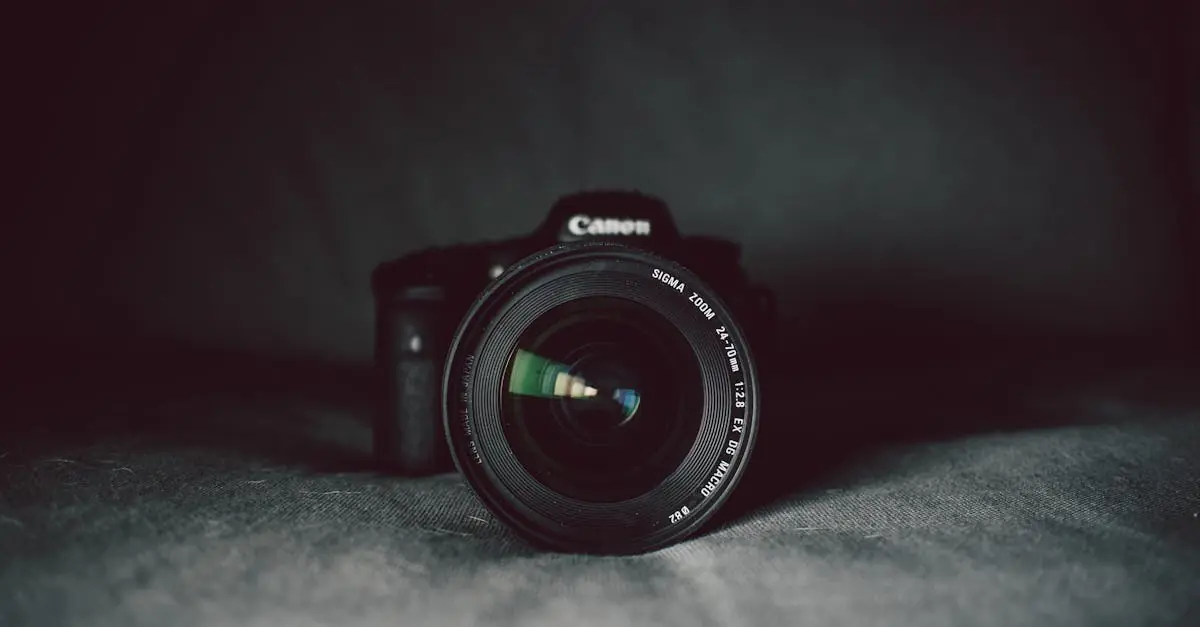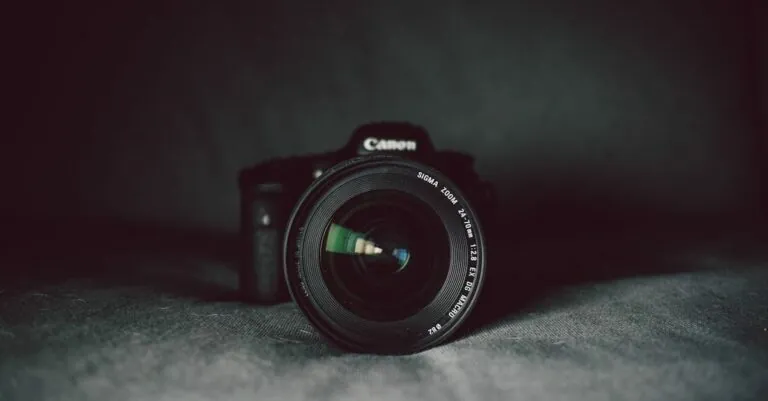Table of Contents
ToggleIn a world where everyone’s a photographer, finding the right compact camera can feel like searching for a needle in a haystack—if that haystack also had a bunch of confused tourists trying to take selfies. Compact cameras promise portability without sacrificing quality, but do they deliver? It’s time to dive into the nitty-gritty and see which ones are worth their weight in your pocket.
Overview of Compact Cameras
Compact cameras serve as versatile tools for both casual and serious photographers. Their small design allows for effortless carrying without compromising image quality. Many compact models feature large sensors that rival those found in larger cameras.
Users often appreciate the ease of use provided by these devices. Automatic settings and built-in editing features simplify the shooting process. Various manufacturers include optical zoom capabilities, enhancing versatility in different shooting scenarios.
Compact cameras typically range in price from $150 to $1,500, catering to various budgets and skill levels. Brands such as Canon, Sony, and Panasonic consistently deliver high-quality options, ensuring reliability across their product lines.
Reviewers often highlight features like image stabilization, low-light performance, and connectivity options. For instance, Wi-Fi capabilities allow seamless sharing of photos on social media. Pocket-sized designs make them suitable for travel photography, street photography, and everyday use.
Many models also incorporate advanced features like manual controls and RAW image support. Photographers seeking flexibility and creative control find these enhancements particularly appealing. Each compact camera has its unique strengths, making careful evaluation crucial for selecting the right option.
Ultimately, compact cameras blend convenience with quality, making them a popular choice among photographers of all levels. Understanding specifications and real-world performance ratings helps individuals make informed decisions.
Key Features to Consider
Selecting the right compact camera involves evaluating several key features to ensure it meets specific needs.
Image Quality
Image quality ranks first among essential features. Look for larger sensors that enhance performance in various lighting conditions. High-resolution options provide sharp photographs that capture fine details. Lens quality also plays a significant role, as premium lenses deliver superior contrast and color accuracy. Many models include advanced image processing systems for better dynamic range, making them suitable for both daytime and low-light scenarios. RAW image support is a must for those who edit their photos, enabling greater control over adjustments.
Portability and Design
Portability and design significantly influence the user experience. Compact cameras typically weigh between 10 to 20 ounces, making them easy to carry. Sleek designs fit comfortably in pockets or small bags, ideal for travel enthusiasts. Various color options and finishes allow for personalized aesthetics while maintaining robust build quality. Ergonomic grips enhance user comfort during extended shooting sessions. Many manufacturers prioritize intuitive interfaces, ensuring that users navigate easily through settings, which adds to the convenience of on-the-go photography.
Battery Life
Battery life plays a crucial role in usability during outings. Most compact cameras provide battery life ranging from 200 to 400 shots per charge. Users should consider models with energy-efficient features that extend operational time. Fast charging capabilities also enhance convenience, making it easier to recharge between sessions. Some cameras come with options for external battery packs for extended shoots. Prioritizing battery performance ensures photographers capture all the moments without the concern of battery depletion.
Testing Methodology
The testing methodology employed for compact cameras involves both controlled laboratory evaluations and practical assessments in diverse environments.
Laboratory Tests
Controlled conditions gauge a compact camera’s performance metrics. Tests include measuring image resolution at various ISO levels, assessing low-light capabilities, and evaluating autofocus speed. Additionally, researchers analyze color accuracy across different lighting scenarios. These lab results provide insight into each camera’s technical specifications and help identify models that excel in specific areas, such as dynamic range and noise reduction.
Real-World Scenarios
Photographers assess cameras in everyday situations to determine practicality and usability. Street photography captures spontaneous moments, while travel photography tests portability and battery efficiency. Users evaluate performance in various lighting conditions to highlight low-light functionality. The feedback gathered provides valuable insights into how well individual cameras handle different settings, ensuring they meet the needs of various photographers.
Review of Top Compact Cameras
Compact cameras blend portability with impressive performance, making them popular choices. These models cater to various needs, providing users with an excellent photography experience.
Camera Model 1: Key Features and Performance
Canon PowerShot G7 X Mark III stands out with its 20.1 MP stacked CMOS sensor. Equipped with a fast f/1.8-2.8 lens, it excels in low-light conditions. Users benefit from 4.2x optical zoom and 24-100mm equivalent focal length. Image stabilization reduces blur, ensuring sharp photos, even during movement. Video capabilities reach 4K at 30fps, broadening creative possibilities.
Camera Model 2: Key Features and Performance
Sony RX100 VII offers exceptional quality through its 20.1 MP Exmor RS sensor. Autofocus technology delivers rapid focus with 357 phase-detection points. Users appreciate 8.3x optical zoom for flexibility, allowing them to capture various scenes. This camera features 4K video capabilities with advanced autofocus tracking. A tilting touchscreen adds convenience for vlogging and selfies.
Camera Model 3: Key Features and Performance
Panasonic Lumix LX100 II impresses with its large Micro Four Thirds sensor at 17 MP. A versatile aperture range of f/1.7-2.8 supports adaptability in different environments. This model provides manual controls, appealing to photographers seeking creative control. Users note its 4K video recording, further enhancing content creation. Compact design makes it easy to carry during travel and everyday outings.
Final Thoughts
Selecting the right compact camera demands careful consideration of features and performance. Many photographers favor models that balance portability with image quality. Large sensors play a crucial role in enhancing performance across various lighting conditions. Each brand brings unique offerings; for instance, Canon, Sony, and Panasonic stand out for their reliability and innovation.
Image stabilization remains a vital feature, especially for travel and street photography. Low-light performance is equally important, making higher ISO capabilities a priority. Practical usability factors into the decision, too. Photographers appreciate models with automatic settings, built-in editing features, and connectivity options like Wi-Fi for effortless sharing.
Battery life contributes significantly to the overall experience. Compact cameras typically allow for 200 to 400 shots per charge, with some offering fast charging capabilities. Anchoring their compact design at 10 to 20 ounces ensures easy carrying without compromising capabilities.
Understanding essential specifications guides photographers in making informed choices. The Canon PowerShot G7 X Mark III excels in low-light conditions, while the Sony RX100 VII impresses with rapid autofocus. The Panasonic Lumix LX100 II attracts those seeking manual controls and creative options. Evaluating these aspects sets the foundation for enjoying photography at any skill level.
Testing methodologies further enhance evaluations, blending laboratory assessments with practical scenarios. Real-world examples illuminate how different models perform in everyday situations. Ultimately, compact cameras present a favorable mix of convenience and quality, making them appealing for both casual and serious photographers.
Choosing the right compact camera can significantly enhance a photographer’s experience. With numerous options available it’s essential to prioritize features that align with individual needs. High image quality and portability are key factors that shouldn’t be overlooked.
The standout models discussed offer a blend of advanced capabilities and ease of use. By understanding specifications and real-world performance, photographers can make informed choices that suit their style and budget. Compact cameras remain a popular choice for their versatility and ability to deliver impressive results in a variety of settings. Whether for casual snapshots or serious photography, investing in the right compact camera can elevate one’s creative journey.





